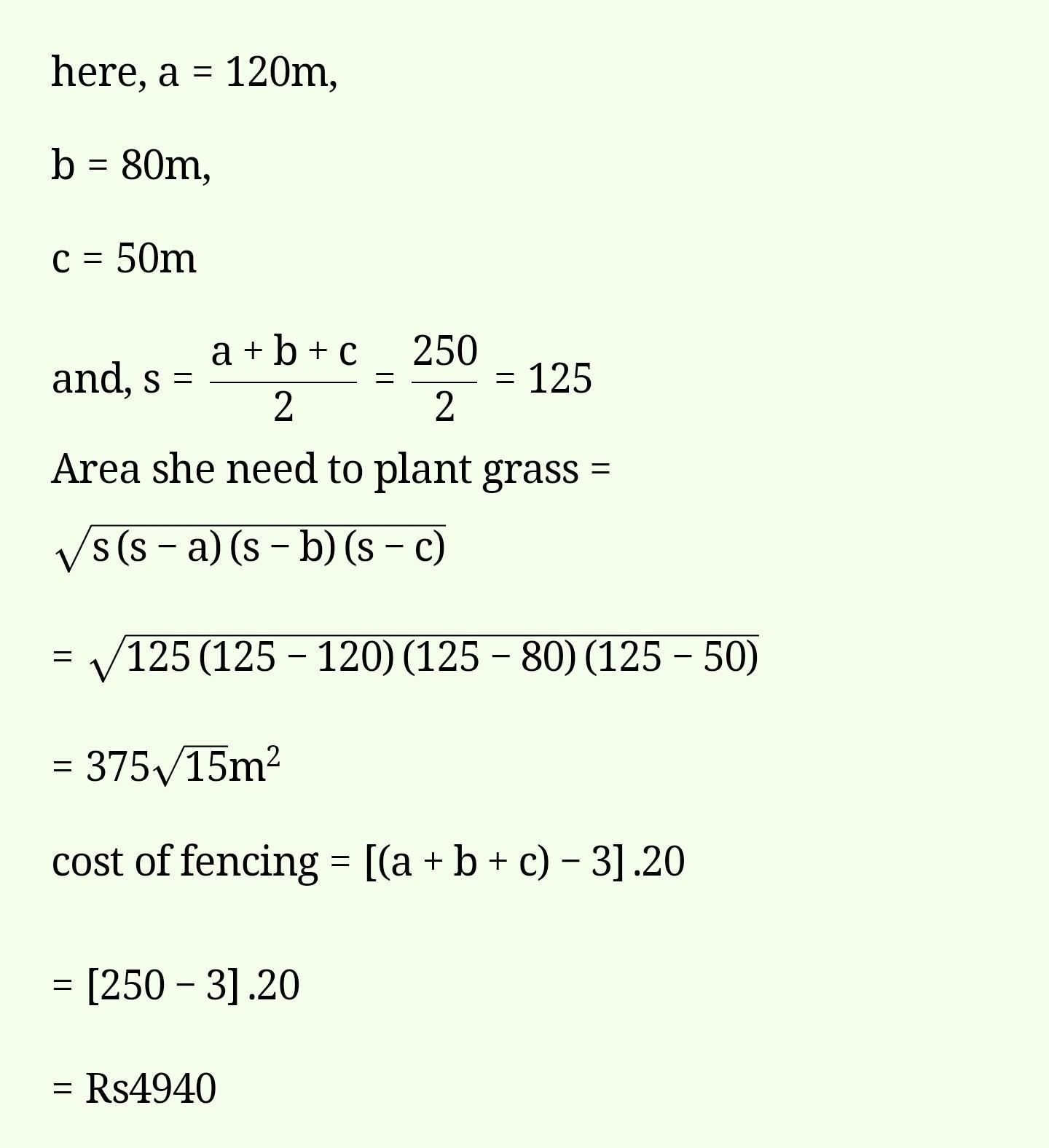If the angles of elevation of the top of the candle from two coins distant 'a' cm and 'b' cm (a > b) from its base and in the same straight line from it are 30° and 60°, then find the height of the candle.
Answers 2
\huge\bf\underline{\underline{\pink{A} \orange{N}\blue{S}\red{W}\green{E} \purple{R}}}
Let AB=candle
C and D are coins
tan60°= AB/BC = h/b
√3 = h/b
h = b√3 --------------(1)
tan30°= AB/BD = h/a
1/√3 = h/a
h = a/√3 --------------(2)
Multiplying (1) and (2), we get
h2= b√3 × a/√3
h2 = ba
h =√ab m

-
Author:
jackbftw
-
Rate an answer:
15
Initial velocity of car u = 20 m/s.
Final velocity =v= 0
Distance traveled after applying brakes = s = 50 m
The third equation of motion is: v^2 = u^2 +2 × a ×s
0^2 = 20^2 +2×a×50.
0 = 400 + 100×a
-400 = 100 a
a = - 400/100 - 4m/s^2
Force = m× a =1000 kg × (-4)m/s^2 = -4000 kgm/s^2
Force = - 4000 Newton's
Negative sign shows that force direction is opposite to velocity direction.
-
Author:
caylee
-
Rate an answer:
5
If you know the answer add it here!
Choose a language and a region
How much to ban the user?
1 hour
1 day
100 years

